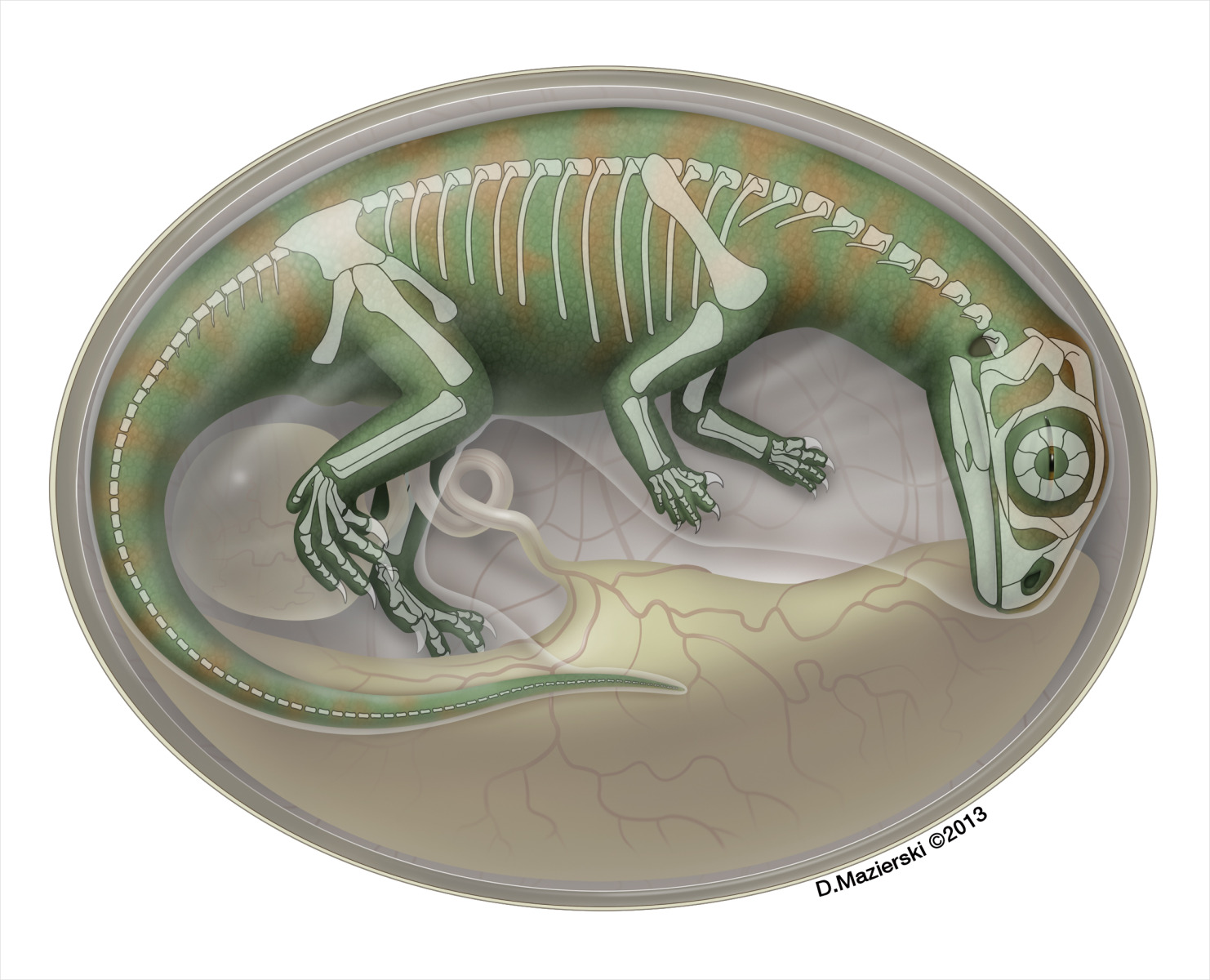A chance fossil discovery in Yunnan province in China has yielded one of the oldest and most interesting collection of fossilised dinosaur embryos yet. These fossils, including preserved organic matter and egg shell, can help us to understand how these animals developed in the egg and in early life.
 Embyronic fossils are incredibly rare. The bones are delicate and often destroyed before they can become fossils, destroying evidence of dinosaur's embryonic development. This particular find, in the Dark Red Beds of a known lower Jurassic formation, and contain many hundreds of finds, all from a the same species, probably a type of Lufengosaurus. These sorts of single-species finds, known as Monotaxic, are a vital resource for researchers, as even if you don't find a single complete specimen, you will find a range of sizes and ages that can help piece together the life story of the animals.
Embyronic fossils are incredibly rare. The bones are delicate and often destroyed before they can become fossils, destroying evidence of dinosaur's embryonic development. This particular find, in the Dark Red Beds of a known lower Jurassic formation, and contain many hundreds of finds, all from a the same species, probably a type of Lufengosaurus. These sorts of single-species finds, known as Monotaxic, are a vital resource for researchers, as even if you don't find a single complete specimen, you will find a range of sizes and ages that can help piece together the life story of the animals.
The fossils date from the Early Jurassic period, between 190 and 197 million years ago. Robert Reisz and colleagues, reporting in the journal Nature this week, catalogue more than 200 bones and samples of fragmented egg shell. Detailed examination of these bones shows that the dinosaurs would have undergone a period of sustained rapid growth, certainly faster than modern birds or other dinosaurs, suggesting that their incubation times may have been very short.
The way the bones have grown, with strong muscle attachments and asymmetrical cross section, shows that the developing dinos would have been active within the egg, developing the muscles and skeleton that it would need for the outside world. This, combined with the evidence for rapid growth, fits very nicely with the evidence from adult fossils, which were significantly larger than many other dinosaurs at the time.
Enticingly, the researchers have also used a special type of x-ray known as synchrotron radiation to examine the fossils for evidence of preserved organic matter. They have found traces that appear to have been left behind by decaying proteins, which could shed some light on the genetics and biochemistry of these giant lizards.









Comments
Add a comment